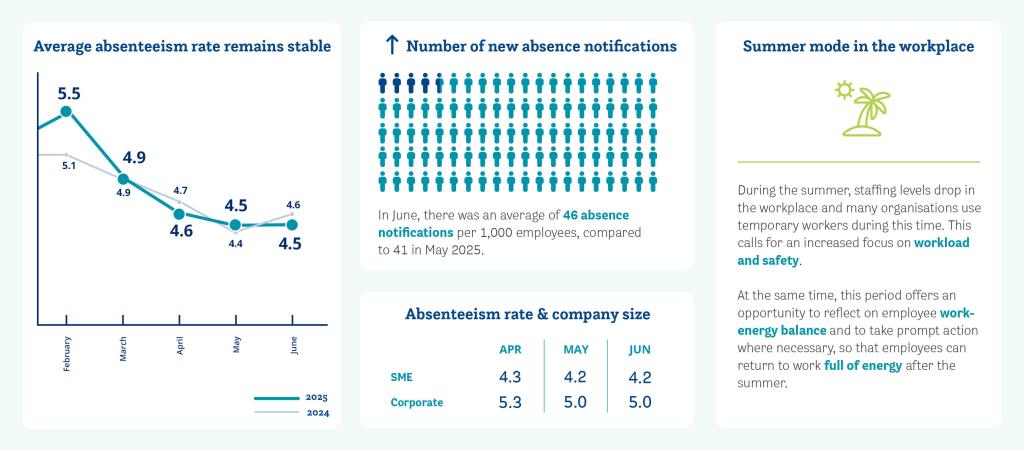The workplace in summer mode: absences remain stable in June

Shift in seasonal patterns
“There seems to be a trend of more and more Dutch people choosing to go on holiday in April and May. We’re expecting to see a shift in the traditional drop in absenteeism figures that we would normally see in July and August, with more of it occurring in May,” says Redmer van Wijngaarden, Occupational Physician and Director of Medical Affairs at ArboNed. “That could explain why the number of sick reports in May is lower than in June, just as it was last year.”
Incidentally, the expected drop in absences in July and August varies depending on the sector. Not surprisingly, education usually stands out because of the school holidays. Many construction and industrial companies also opt for company-wide closures, which reduce absences during those months.
Working safely with temporary workers
Summer is a time of rejuvenation for many employees. However, it also means an increased reliance on temporary workers such as seasonal employees, agency staff and self-employed contractors. “In many organisations, this group is crucial for ensuring continuity, but extra vigilance is also required here,” van Wijngaarden said. “They are often less familiar with the workplace, protocols and risks. A good orientation process, clear agreements and appropriate guidance are essential. After all, temporary workers are full-fledged colleagues and deserve the same attention to safety and welfare as permanent employees.”
Prevent absences through early detection
Although the absenteeism rate has remained stable, it is important to be alert to signs of excessive workload or stress. “Especially during quieter periods, it’s important to have ongoing conversations with employees and reflect together on the workload, energy levels, and work-life balance,” said van Wijngaarden. “This contributes to a healthy work culture that addresses employee well-being on a structural level. Taking action earlier where necessary helps prevent complaints from piling up and leading to long-term absences after the